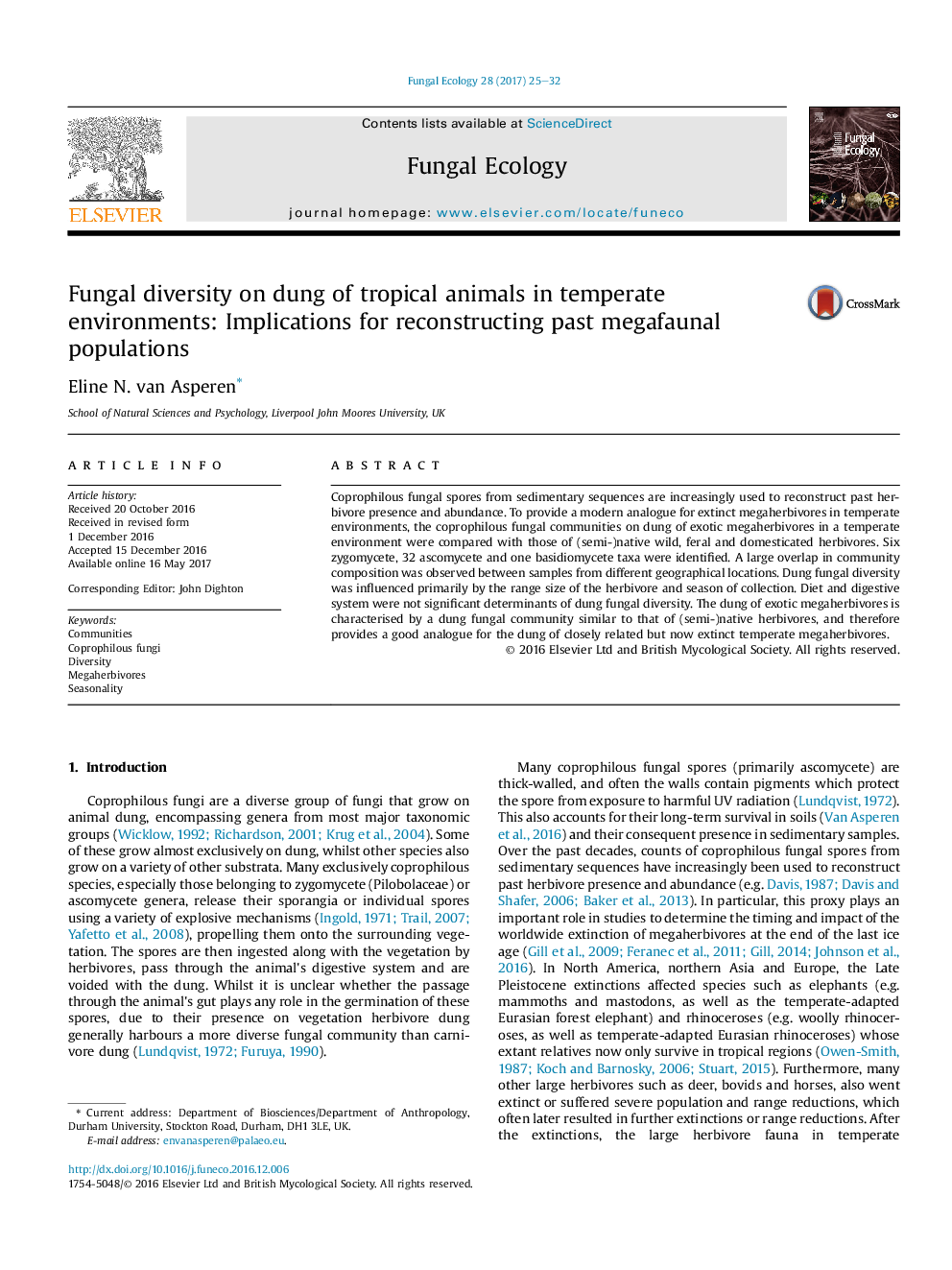| Article ID | Journal | Published Year | Pages | File Type |
|---|---|---|---|---|
| 5517615 | Fungal Ecology | 2017 | 8 Pages |
â¢Exotic megaherbivore dung is a good analogue for dung of extinct megaherbivores.â¢Dung fungal diversity is determined by host range size and season of collection.â¢Diet and digestive system do not significantly impact on dung fungal diversity.â¢UK dung fungal community composition shows little geographical variation.
Coprophilous fungal spores from sedimentary sequences are increasingly used to reconstruct past herbivore presence and abundance. To provide a modern analogue for extinct megaherbivores in temperate environments, the coprophilous fungal communities on dung of exotic megaherbivores in a temperate environment were compared with those of (semi-)native wild, feral and domesticated herbivores. Six zygomycete, 32 ascomycete and one basidiomycete taxa were identified. A large overlap in community composition was observed between samples from different geographical locations. Dung fungal diversity was influenced primarily by the range size of the herbivore and season of collection. Diet and digestive system were not significant determinants of dung fungal diversity. The dung of exotic megaherbivores is characterised by a dung fungal community similar to that of (semi-)native herbivores, and therefore provides a good analogue for the dung of closely related but now extinct temperate megaherbivores.
